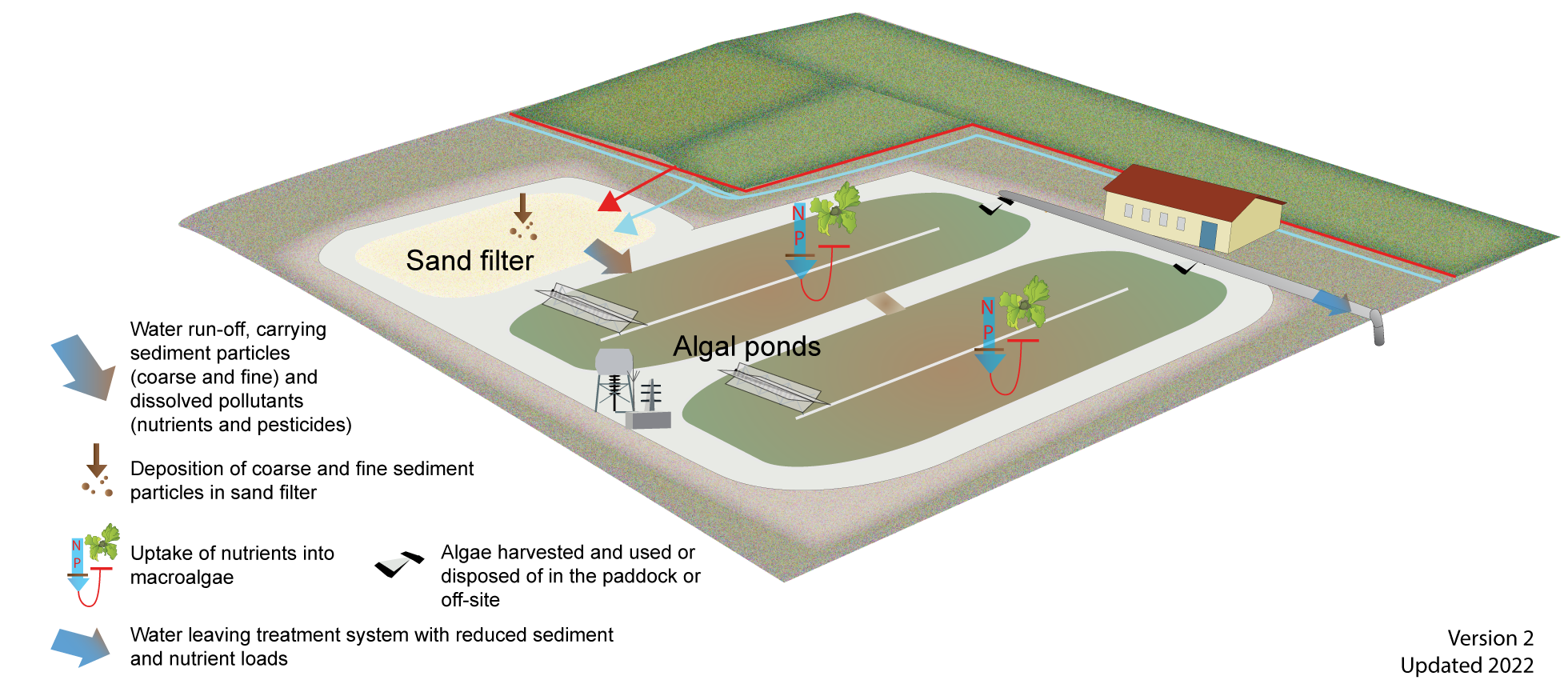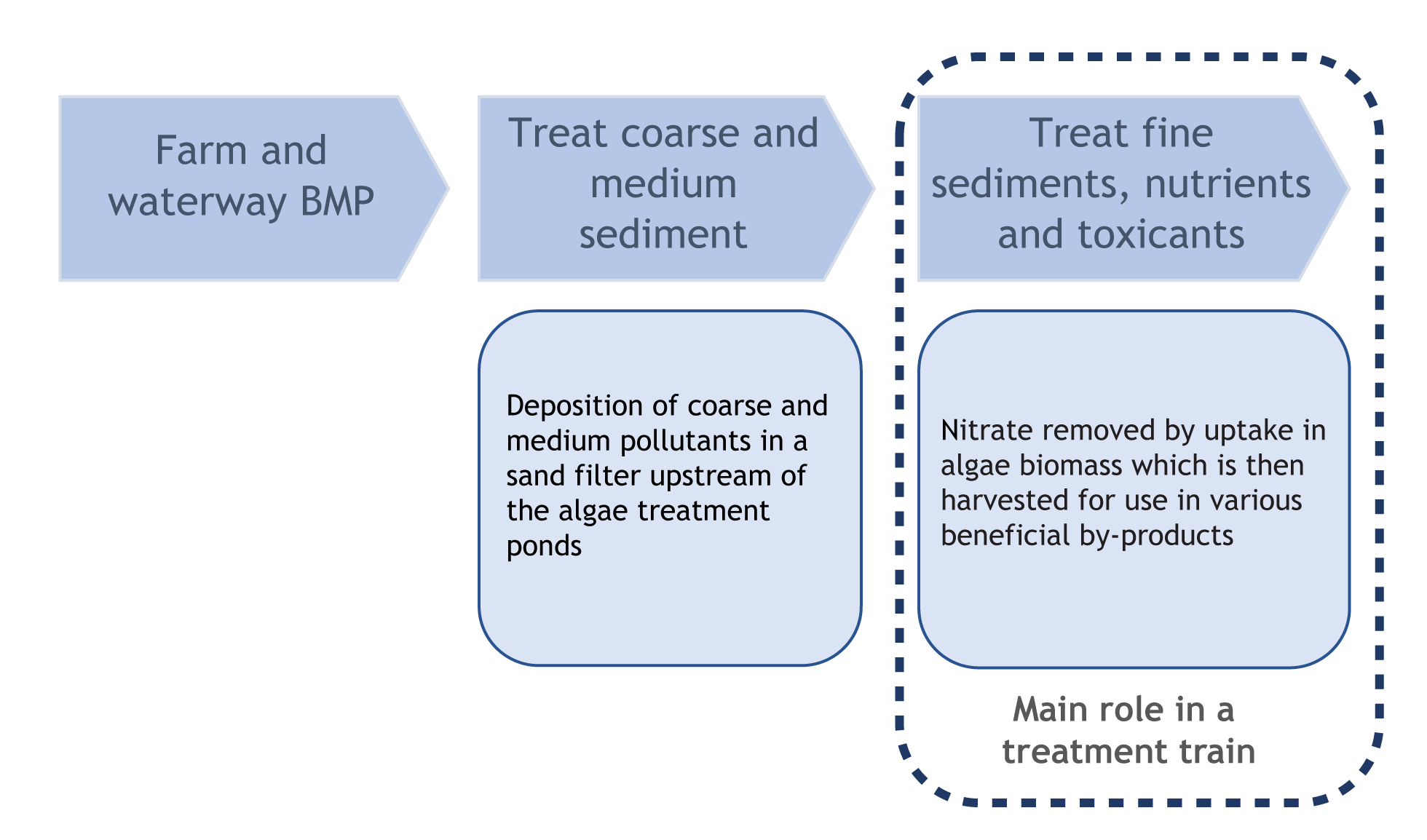|
|
Algae treatmentAlgae treatment — Key considerationsSelect from the tabs below What makes an effective algae treatment system?
Treatment processes
Suitability and limitationsThe technology has been applied to aquaculture, sewage treatment plants and industrial waste streams[2][6]. Different macroalgae species can be selected for treating freshwater or saline water, so it is particularly relevant to land-based marine aquaculture. The treatment system may be applicable to agricultural stormwater runoff or irrigation tailwater where regular flows are available and the system is appropriately designed with a high flow bypass for storm flows[5][2]. The capacity of macroalgae to treat irrigation tailwater from sugar cane has been trialled in a laboratory. This included testing the effects of added diuron (photosystem II inhibiting herbicide used in sugarcane production) as might be present in sugarcane runoff/tailwater to test whether the macroalgae treatment systems could effectively operate in the presence of this herbicide. The algae trialled (Oedogonium sp.) survived, with reduced productivity, when diuron concentrations were 10µg/L, however diuron concentrations of 30μg/L were lethal[3]. The cost-effectiveness of algae treatment in removing the target pollutant/s needs to be considered relative to other treatment structures. Refer to cost considerations for more information. DisclaimerIn addition to the standard disclaimer located at the bottom of the page, please note the content presented is based on published knowledge of treatment systems. Many of the treatment systems described have not been trialled in different regions or land uses in Queensland. The information will be updated as new trials are conducted and monitored. If you have any additional information on treatment systems or suggestions for additional technologies please contact us using the feedback link at the bottom of this page. References
Last updated: 30 June 2022 This page should be cited as: Department of Environment, Science and Innovation, Queensland (2022) Algae treatment — Key considerations, WetlandInfo website, accessed 8 May 2025. Available at: https://wetlandinfo.des.qld.gov.au/wetlands/management/treatment-systems/for-agriculture/treatment-sys-nav-page/algae-treatment/design-summary.html |

 — Department of the Environment, Tourism, Science and Innovation
— Department of the Environment, Tourism, Science and Innovation



